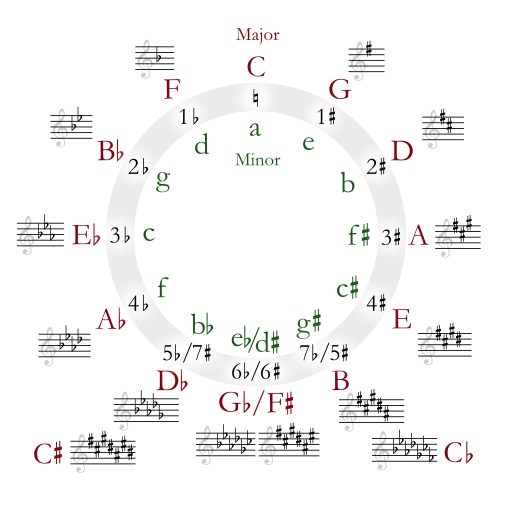The Circle of the Fifths
08.07.2019
The circle of the fifths is here pictured

The outer red circle is the "major part" of the circle. The inner green circle is the "minor part". For a given key, say C, we have the relative key A found at same place on the inner circle. This key contains the same notes but with a different tonic. That is the C major scale contains the same notes as the A minor scale.
An isolated tone is called tonic. If we focus on E as tonic we can see in the circle that the E major scale contains 4 sharps and zero flats. It is written as thus e f g\s a b c\s d\s For G♭ we have 5 flats and 6 sharps. Taking one step clock wise we reach the dominant. For E we get B. One step counter clockwise we reach the subdominant. For E we get A. The dominant is placed 7 semi tones higher than the tonic. The subdominant is placed 5 semitones higher that the dominant. If we ascend in either natural minor or major, we reach the dominant 5 steps higher than the tonic. We reach the subdominant using both scales 4 steps higher.
Sharp and flat notation can refer to same key. That is D♭ equals C♯.